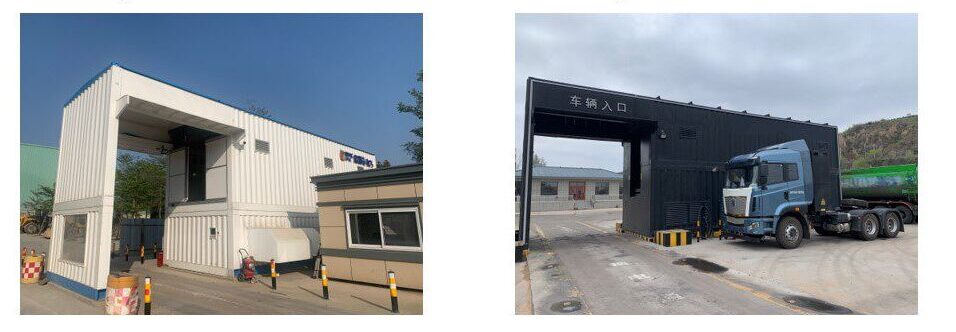Blog
China is propelling its electric truck market by embracing battery swapping
China is widely known as the world’s largest market for electric cars and buses, but did you know that it’s also leading in the race to electric trucks? Indeed, based on data from EV-volumes.com, in 2022, China sold 36,000 electric trucks, 91% of the global total. And no country except China has ever sold more than 1,000 new electric trucks in a single year.
In recent years, China gradually shifted its vehicle-electrification policy efforts to trucks, which are responsible for a disproportionate share of nitrogen oxides (NOx), particulate matter (PM), and carbon dioxide (CO2) emissions in the nation’s vehicle fleet. Besides various fiscal and non-fiscal incentives offered to electric trucks, support for battery swapping is playing a key role. The Chinese national government and several local governments have encouraged battery–swapping technology since 2020 and the share of swap-capable vehicles in China’s electric truck sales has been increasing. In 2022, 49.5% of the electric trucks sold in China were swap-capable. These swap-capable electric trucks are mainly used for short-haul applications at ports, mining sites, and in urban logistics. They are typically equipped with a 141 kWh or 282 kWh battery and have a typical one-way trip length of less than 100 km.
Compared with today’s plug-in charging technologies, the key advantage of battery swapping is the short time required to recharge. With plug-in charging, it usually takes 40 minutes with DC fast charging or several hours via regular charging to recharge an electric truck. In contrast, battery swapping only takes 3–6 minutes. This speed can be appealing for truck owners because trucks are used for commercial purposes; faster charging leaves more time to deliver goods and generate profits.
To collect firsthand information, we visited several battery–swapping stations for electric trucks in China this summer. We saw that electric trucks usually pulled into the battery–swapping station with a battery state of charge (SOC) of 20%–30%. A robotic arm reaches down from above, takes out the depleted batteries—these weigh approximately 3 tons and are stored behind the driver’s cab—and puts them into storage for recharging. Then the robotic arm takes out fully charged batteries stored by the station and inserts them into the vehicle. After that, the vehicle can drive away and return to operation.

On the left, a battery-swapping station in Hainan province used by electric concrete mixers and on the right, a station in Shaanxi province used by electric tractor-trailers. Photos by Tianlin Niu.
The battery-swapping stations we visited typically store seven batteries. Depleted batteries swapped from vehicles are charged using DC fast chargers and recall that these need about 40 minutes to get fully recharged. By the time all seven batteries are swapped and the eighth vehicle comes to the station, the first swapped battery has completed recharging and can be used to swap the depleted battery of the eighth vehicle.
Though battery swapping is gaining in popularity in China today, there are still some hurdles to clear before it becomes widely commercialized. The first is a lack of standardization of batteries. Batteries produced by different manufacturers can vary in shape, size, and how they are connected with vehicles. Thus, at present, truck drivers can only swap batteries at certain battery-swapping stations that can meet their needs. Next is high cost. Based on our interviews with station owners, setting up a battery–swapping station costs around ¥7–8 million (~US$1–1.1 million) today; half of the cost is the batteries stored in the station and the other half comes from equipment, cables, and transformers.
In October 2021, the Chinese national government initiated a two-year pilot program to promote battery swapping. Eleven cities were selected as the first batch of pilot cities, and three of them are expected to fully focus on swap-capable truck applications. The other eight cities are expected to demonstrate battery swapping on both electric cars and trucks. The program aims to put at least 100,000 swap-capable electric vehicles on the road and build at least 1,000 battery–swapping stations. As mentioned above, some Chinese provinces and cities are also using their own funds to subsidize the construction of battery–swapping stations. Hainan province, for example, provides subsidies equal to 15% of the total construction cost of a battery–swapping station.
With this strong policy support, it’s likely we’ll see more swap-capable trucks and battery–swapping stations deployed in China in the coming years. At the same time, China is not putting all of its proverbial eggs in the battery–swapping basket. Indeed, it’s among the markets that are most actively developing ultra-fast (i.e., megawatt-level) plug-in charging technologies, as evidenced by the Chaoji standard that China is developing in collaboration with Japan. As the largest truck market and also the largest electric truck market in the world, China’s engagement with diverse charging solutions will provide valuable learning for other markets as they seek to transition to electric trucks.
